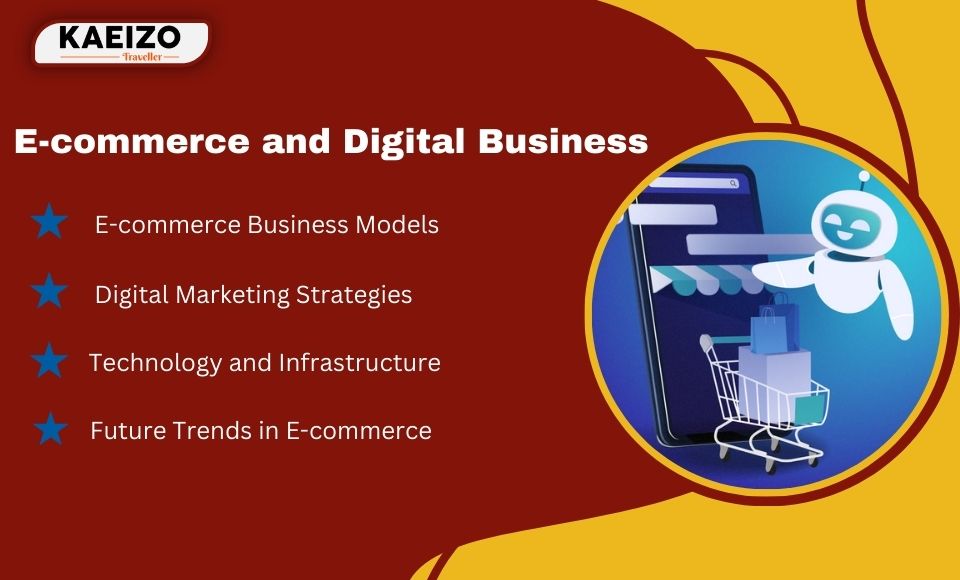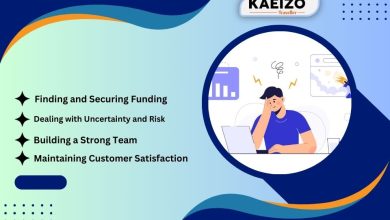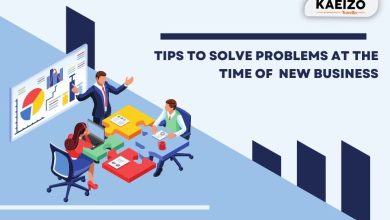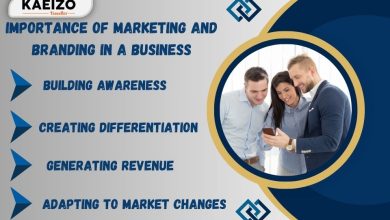
Business
E-commerce and Digital Business
E-commerce and digital business are rapidly evolving fields that encompass a wide range of activities related to buying and selling goods and services online. Here are some key topics within this area:
1. Overview of E-commerce
- Definition and Types: E-commerce can be divided into several categories, such as B2B (Business-to-Business), B2C (Business-to-Consumer), C2C (Consumer-to-Consumer), and C2B (Consumer-to-Business).
- Growth Trends: The e-commerce industry has seen exponential growth, driven by increased internet penetration, mobile device usage, and changing consumer behaviors.
2. E-commerce Business Models
- Online Retailers: Companies that sell physical products directly to consumers online.
- Marketplaces: Platforms like Amazon, eBay, and Alibaba that connect buyers and sellers.
- Subscription Services: Businesses that offer products or services on a recurring subscription basis, such as Netflix or Dollar Shave Club.
- Dropshipping: A model where the retailer doesn’t hold inventory but forwards orders to suppliers who ship directly to customers.
3. Digital Marketing Strategies
- SEO (Search Engine Optimization): Techniques to improve the visibility of an e-commerce site on search engines.
- Content Marketing: Creating and distributing valuable content to attract and engage a target audience.
- Social Media Marketing: Using platforms like Facebook, Instagram, and Twitter to promote products and interact with customers.
- Email Marketing: Sending targeted email campaigns to nurture leads and retain customers.
- PPC (Pay-Per-Click) Advertising: Paying for advertisements that appear on search engines and other websites.
4. Technology and Infrastructure
- E-commerce Platforms: Software solutions like Shopify, WooCommerce, and Magento that enable businesses to build and manage online stores.
- Payment Gateways: Services that process online payments, such as PayPal, Stripe, and Square.
- Security: Ensuring the safety of customer data and transactions through encryption, SSL certificates, and compliance with standards like PCI-DSS.
5. Customer Experience and Engagement
- User Interface (UI) and User Experience (UX): Designing intuitive and engaging online shopping experiences.
- Customer Service: Providing support through various channels like chatbots, email, and phone.
- Personalization: Using data to tailor the shopping experience to individual customers.
6. Logistics and Supply Chain Management
- Inventory Management: Keeping track of stock levels and ensuring timely replenishment.
- Order Fulfillment: Efficiently processing and shipping orders to customers.
- Returns Management: Handling product returns and exchanges.
7. Analytics and Data
- Web Analytics: Tools like Google Analytics to track and analyze website traffic and user behavior.
- Customer Data: Collecting and leveraging data to understand customer preferences and improve marketing efforts.
- KPIs (Key Performance Indicators): Metrics to measure the success of e-commerce activities, such as conversion rate, average order value, and customer lifetime value.
8. Future Trends in E-commerce
- Mobile Commerce (M-commerce): The increasing use of smartphones for online shopping.
- Voice Commerce: Shopping using voice-activated devices like Amazon Echo and Google Home.
- Augmented Reality (AR) and Virtual Reality (VR): Enhancing the shopping experience through immersive technologies.
- Sustainability: Growing consumer demand for eco-friendly products and practices.




